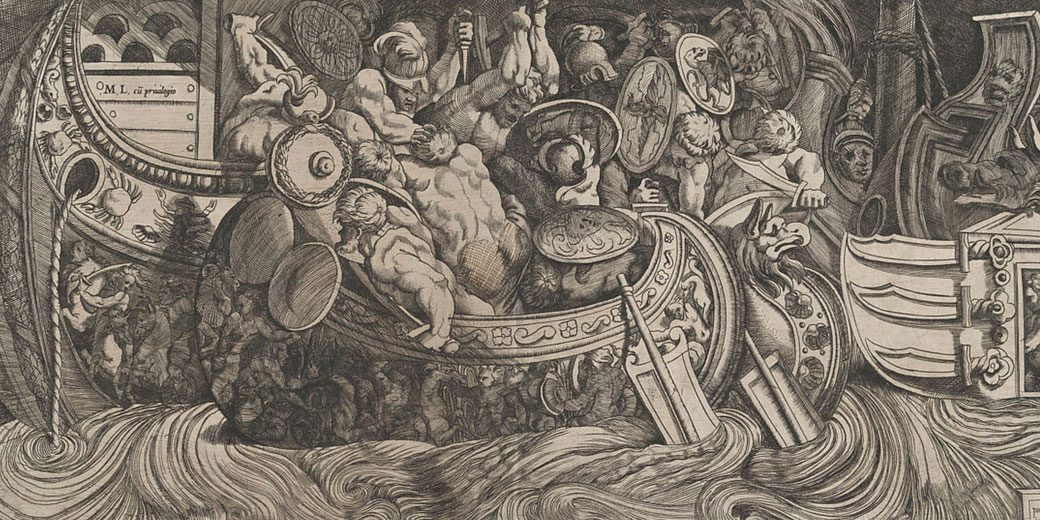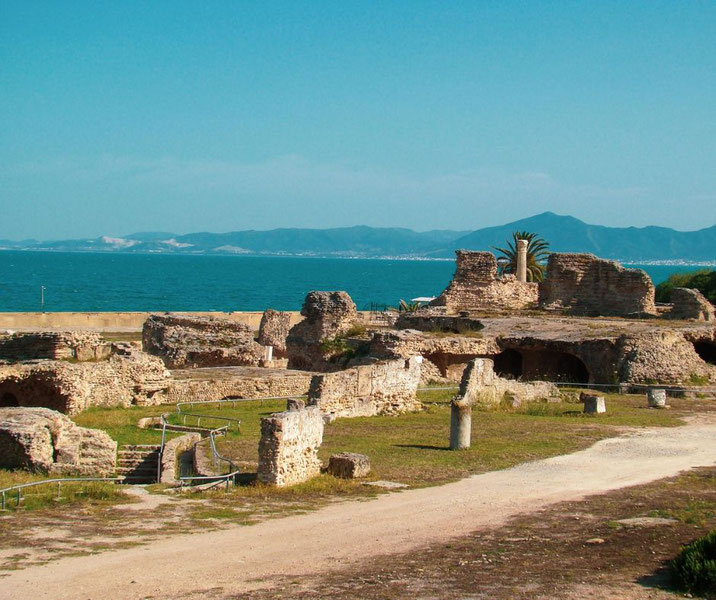How the Punic Wars made Rome a superpower

Ancient Rome began as a single city in Italy, called Rome. During the 5th, 4th and 3rd centuries BC, the armies of Rome gradually expanded and conquered most of Italy.
At this point, the Romans made contact with another powerful city that had also been growing in power but was located on the other side of the Mediterranean Sea, known as Carthage.
What was Carthage?
Carthage was a city located on the coast of northern Africa, which had been founded by Phoenician sea-traders.
Due to the development of a powerful navy, Carthage controlled most maritime movements in the western half of the Mediterranean.
At the beginning of the 3rd century BC, Carthage controlled most of the island of Sicily, which was located between themselves and Rome.
This became a flashpoint of conflict between Carthage and Rome that would occur from 264 to 146 BC, across three separate wars, known as the Punic Wars.
The name ‘Punic’ was used by the Romans because the Carthaginians were also known as the Poeni, which was linked to the ancient Phoenician traders who founded the city.
The First Punic War (264–241 BC)
The First Punic War began when Carthage expanded their power on Sicily, and a city they attacked reached out to Rome for help.
Rome accepted the call and marched their armies to the island.
Carthage’s strength was in its navy and it preferred to fight on the seas. However, Rome’s strength was in its army, which preferred to fight on land.
Carthage preferred to play to their strengths and avoided direct land war with Rome.
The Romans knew that if they were to win the war, they had to develop their navy. After discovering a Carthaginian ship washed up on a beach, they copied the design and built a brand-new set of ships.
Rome still knew that they had stronger armies and looked for clever ways to force Carthage to engage in hand-to-hand fighting.
Therefore, the Romans developed a ‘bridge’ that they could carry on their ships, called the corvus (the Latin for ‘raven’).
When two ships got close enough, the Romans would drop the bridge and lock the ships next to each other.
This allowed Roman soldiers to rush across and attack the enemy in hand-to-hand combat.
Following a series of victories on land and sea, Rome finally forced Carthage to admit defeat in 241 BC.
Carthage had to hand over control of Sicily and, three years later, Rome also took control of the islands of Sardinia and Corsica.
The Second Punic War (218–201 BC)
After the defeat in the First Punic War, Carthage needed new regions to conquer to rebuild their armies and navies.
As a result, Carthage sent out troops to take control of the east coast of Spain, which gave them access to rich silver mines.
Once they had taken this region, a Carthaginian general, called Hannibal Barca, sought revenge on Rome for their victory in the First Punic War.
He would become the leading Carthaginian general in the Second Punic War.
Hannibal marched an army through France and across the Alps in northern Italy and launched a surprise attack on Rome.
Rome sent out a series of armies to stop him, but Hannibal achieved a number of stunning victories against Roman armies.
However, despite horrific losses at the Battle of Cannae in 216 BC, Rome refused to surrender.
Eventually, Hannibal had to march his forces back to Africa, where he defended the city of Carthage against a major Roman invasion force at the Battle of Zama in 202 BC.
After learning the lessons from the previous 14 years, Rome successfully defeated Hannibal in this battle and forced Carthage to surrender again.
As a result of losing this second war, Carthage had to surrender their navy and their empire.
Carthage was reduced to a single city that operated under Roman control.

The Third Punic War (149–146 BC)
In the third and final Punic War, some Romans feared that Carthage was attempting to rebuild its power and argued that they needed to destroy the city entirely.
Roman forces attacked Carthage again in the Third Punic War. This time, when Carthage surrendered, the Romans destroyed the city entirely.
This finally ended the existence of the Carthaginian culture.
In its place, the Romans created a whole new province called ‘Africa’, a name which we continue to use today.

Consequences
Following the final victory over Carthage in 146 BC, Rome had become the undisputed power in the western Mediterranean.
It also resulted in Rome building a navy that was bigger and more experienced than any other empire at the time.
As a result, Rome was prepared to quickly expand and conquer more regions to ultimately become the Roman Empire.
What do you need help with?
Download ready-to-use digital learning resources
Copyright © History Skills 2014-2025.
Contact via email
With the exception of links to external sites, some historical sources and extracts from specific publications, all content on this website is copyrighted by History Skills. This content may not be copied, republished or redistributed without written permission from the website creator. Please use the Contact page to obtain relevant permission.





